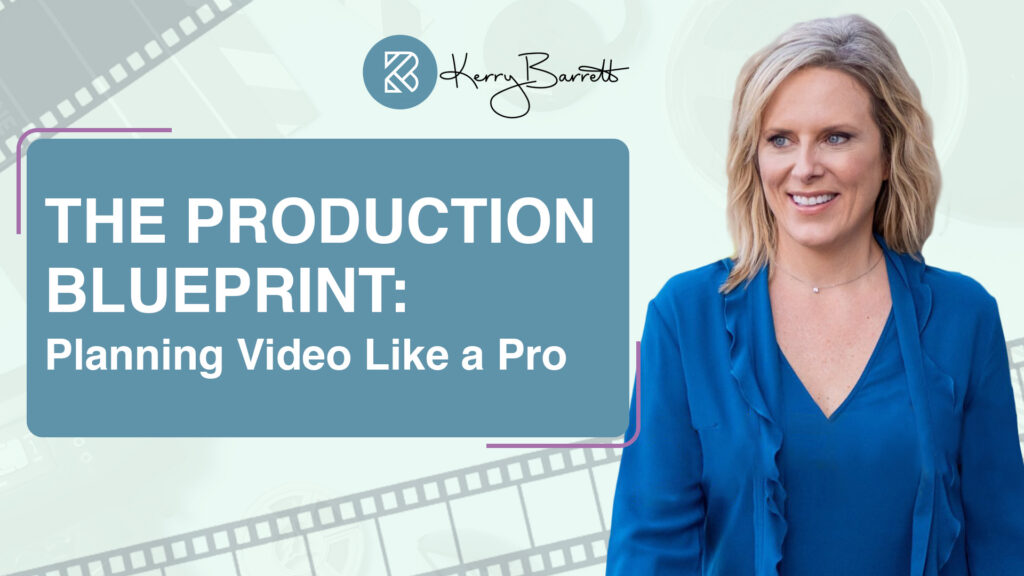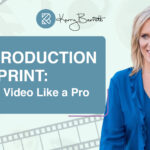
What’s the first step for a lawyer looking to start creating video content?
To start creating video content, you really only need three basic tools: your face, your voice, and your phone. That’s it. Most people already have those at their disposal. However, to elevate the quality of your video and present yourself as a credible authority, there are a few production basics you’ll want to include.
For static videos—those recorded from your home or office—a tripod is a game-changer. It doesn’t need to be expensive (you can find one for under $20 on Amazon), but it ensures a steady, headache-free shot and allows you to properly frame yourself. If you’re recording a walk-and-talk video, a Steadicam setting can help reduce shakiness.
If you don’t have a tripod on hand, a great hack is to place your phone on a windowsill or ledge while facing the window. This setup gives you steady footage and flattering natural light. Simple tricks like these make a big difference in how professional your video looks.
Is it really worth the time for lawyers to create video content? What’s the ROI?
Absolutely. Especially when considering the visibility and influence video content can provide. Let’s use LinkedIn as an example—only about 10% of attorneys are currently creating any content there, and an even smaller percentage are posting video. Meanwhile, LinkedIn is actively promoting video content on its platform.
By simply creating and posting videos once or twice a week, you can significantly boost your online presence, position yourself as an authority, and build your personal brand. One law firm reported a 4,009% increase in website traffic after they started posting videos. The potential ROI includes not only higher engagement but increased referrals and more qualified leads.
How important is having a video strategy or production plan?
A strategy is essential. Each video should have a specific purpose within a broader content strategy. Think of it as guiding your audience through a funnel: Awareness, Interest, Desire, and Action.
You’re not just randomly putting content out there—you’re leading potential clients and referral partners through a journey that builds trust and motivates them to work with you. Videos should be designed to capture attention, build connection, and lead to conversion.
Mapping out your customer journey helps ensure your videos are relevant, timely, and speak directly to your audience’s pain points. Once that strategy is in place, you move into scripting and production. Without a plan, your videos may miss the mark and fail to resonate with your audience.
How do you figure out what to talk about in your videos?
Start by answering the most common questions your clients or referral partners ask. Review your recent emails or conversations and turn those FAQs into short, informative videos. This method not only provides value to your audience but also makes it easier to get started with content creation.
Once you’re comfortable on camera, you can categorize your video topics to align with the stages of your audience’s journey: Awareness, Interest, Desire, and Action. It’s about meeting your audience where they are and helping them take the next step.
Do you need a script, outline, or teleprompter to record a video?
There’s no one-size-fits-all answer—it depends on your comfort level and personal preference. Here are the three main approaches:
- Teleprompter: Great for delivering a polished message in one take. Ideal for scripted content like video sales letters or educational content. However, it takes practice to sound natural while reading.
- Outline/Bullet Points: Perfect for a more conversational tone. It allows flexibility but may require more takes and editing.
- Memorization in Chunks: This method sounds very natural. Memorize a sentence or two, deliver it to the camera, then repeat. It’s conversational but editing takes longer due to pauses between segments.
Regardless of the method you choose, it’s helpful to fully write out your script at first. This lets you organize your thoughts, estimate timing (aim for videos under 60 seconds), and ensure you stay on message. Tools like CapCut now offer AI-powered editing features like AutoCut, which can remove long pauses and make this process smoother.
Which method is best: teleprompter, outline, or memorization?
Each method has its pros and cons, and all are worth learning. The decision really comes down to your goals and the time you have for editing.
- Use a teleprompter for detailed, time-sensitive content like webinars or video sales letters.
- Use bullet points for casual updates or thought-leadership pieces.
- Use memorization in short bursts for a natural tone, especially when you want to maintain eye contact and engagement.
The key is always the same: speak conversationally, stay connected to your message, and plan for the editing time each approach requires.
How do you keep short-form video content focused and engaging?
Short-form videos (under 60 seconds) are currently performing the best on platforms like LinkedIn, TikTok, Instagram Reels, and Facebook. But in order to make those short videos effective, you need a clear, concise message—no rambling or stream-of-consciousness delivery.
That’s where manuscripting becomes especially important. Writing out your full script helps you hit the key points without wandering off-topic. If your message needs to be delivered in a certain way or within a specific timeframe, a teleprompter will help you stick the landing.
What’s the best way to batch video content without it looking repetitive?
Batching is one of the smartest ways to maximize your time. But to do it effectively, you need two things: a content strategy and a content calendar. Plan what you’re going to say in each video and how it aligns with your goals.
Once you’re ready to record, set up your “studio.” This doesn’t need to be a professional space—just a designated area with a tripod, phone, and three small lights positioned for even lighting. Mark your tripod and standing spot with tape for consistency.
To avoid the appearance that all your videos were filmed in one session, do a quick wardrobe change between takes. Swap out your top and accessories from the waist up. But even if you don’t change outfits, don’t let that stop you from filming. Done is better than perfect.
Final Thoughts: What’s the most important takeaway for lawyers new to video production?
You don’t need fancy gear or a professional studio to create high-impact video content. With a clear strategy, some basic equipment, and a bit of practice, any attorney can create engaging, professional-looking videos that build trust, boost visibility, and ultimately grow their business. Start with what you have, plan your message, and just hit record.




